And, while I fear sounding like a broken record (oops, this is a CD!), it tends to come down to the richness of the lower midrange and bass, combined with superb detail — and by the latter, I don’t mean excessive top end at all. It’s just that I feel I can hear the fullness of the sound of the individual instruments, and I can also hear where they are. Harp, clarinet duos, the buzz of the cellos in a quiet passage, the flute duet, the concert master’s sweet-toned solo…it’s all there. Imaging has never been more dimensional and stable. Again, I hear no hint of whether this is digital or analog. It’s just the music. And it happens to be a piece I’ve loved but never heard quite like this.
Miles Davis, Sketches of Spain, Mobile Fidelity Original Master Recording, UDSACD 2086. Mobile Fidelity has generally done an excellent job with its Miles Davis Columbia reissues on SACD. Sketches of Spain seems particularly good. In fact, as good as the sound is now, I would be largely disinclined to search out an LP issue if I did not already have an early 6-eye pressing. As a serious vinyl junkie, I can say that the LP does sound a hair better, but the SACD, via the current set-up, brings so much pleasure that I don’t feel compelled to look further; and it’s so quiet.
The Proteus contributes a last bit of transparency and musicality to the mix that helps me get to the point of not thinking about the format. The orchestration is at times dense, of course, yet I have no real doubt as to the instrumental combinations. But there is also much subtlety, with reliance on the harp, solo woodwinds, brushes lightly circling the snare, etc. Then there is Miles’ characteristic tone, much of which is soft-edged in keeping with the music.
Indeed, the Proteus, in keeping with the best gear, brings no attention to itself. The tonal balance is exemplary and, as much as I like the Kimber, what I hear now seems more full-bodied and authentic to the instruments and arrangements. The right amount of bass, midrange, treble, etc., with a full body to what I hear that is musically convincing. And, I can hear Miles’ tonal modulations down to the shifts in his lips, somewhat to my surprise, and his half valve gestures, and his tonal bends.
Traincha, The Look of Love, Blue Note 3844202-8. The main thing I notice while listening to this CD via the Proteus versus the Kimber is subtlety. In the past, I was somewhat less impressed with Traincha’s voice. It seemed, at times, not quite up to dealing with some of the weight of having heard these tunes over a period of years via some incredible singers at the top of their game, such as Dusty Springfield’s classic version of “The Look of Love.” This evening, I heard a level of detail in the mid-range of Traincha’s voice that caused me to wake up to a level of expression that I’d missed before. Indeed, in her “Look of Love” I found myself with a nostalgic catch in my throat that I am almost embarrassed to admit. But isn’t that really why we do this audiophile thing…heavens, I hope so.
Similarly with the superb arrangements, which balance various wind, brass and string choirs with drums, electric piano, voices, etc., in a profusion of color, I found myself so absorbed with the effects, and the skill with which they were manipulated, that I kept listening well past my normal hours. Several of the songs that I’d found less interesting before suddenly woke up to my ears.
Now, curiously, my initial reaction upon hitting the PLAY button for this CD was that of feeling a bit underwhelmed, in comparing what I heard to my memory of the Kimber cables in the system. In reflecting, the Kimber emphasized more of the leading edge than the richness and color of the sound. The soundstage did not go so far back, nor was it quite as wide. That’s why I say that my experience of the Proteus in comparison is about subtlety — “subtlety” here meaning the detail and color that we would hear if we were actually in the studio as the music was being made. It is also less about being front and center than being back far enough and not too far to hear the fullness of the presence, and the real-ness of the blend. Indeed, I’ve rarely listened to this CD past the first 3 or 4 tracks. Now the whole disc is almost over. I’ve been missing some great sound and music.
Ambrose Akinmusire, the imagined savior is far easier to paint, Blue Note BOO1972602IN02. I’ve heard this CD in a number of settings, including with various headphones. Hearing it on the system with the Proteus cords reminds me, perhaps oddly, of my Audeze headphones: rich and full-bodied, not dark, just no unnecessary overemphasis on the top end, nothing “hi-fi” about it. Indeed, the cymbal work of this incredible drummer is all there but doesn’t cover up the soloists as I’ve heard it do once or twice on other systems. (I mean the comparison to the Audeze in an entirely complementary way. I’ve heard few headphones like them.)
Nino Gvetadze, piano, Visions: PianoWorks by Cyril Scott, Challenge CC72819. I wish this CD would reach more general circulation. The playing of these lesser-known, somewhat impressionistic tone poem-type pieces is extraordinarily beautiful, in part because the pianist, Nino Gvetadze, is quite unafraid to play gently and softly and she imparts a superbly judged rubato to these pieces that, heard elsewhere, seemed rather bland, which they do not seem here.
The reproduction of the piano is better than I remember hearing it at any time previously, on this or other systems. Indeed, it is quite gorgeous —the definition of “liquid.” One thing I notice with Proteus cords is an improvement in the lower midrange. I heard some glare in that range that bothered me before; it muddied the pianistic waters, but that is now gone. I would say that, when the going gets thick and somewhat intense, the recording is not totally ideal, perhaps less than completely “real,” but darn sexy, especially in its approach to rich and thick bottom end. The Proteus allows all of this to come through at its best, and helps bring about the dream-like atmosphere that our pianist (as well as the composer) seeks.
Sergei Prokofiev, Symphonies 6 & 7, Netherlands Radio Philharmonic Orchestra, James Gaffigan, Challenge SACD 2714. This SACD wasn’t new to me, but it may as well have been. It did not impress me until now, but I only heard it elsewhere, albeit on a system I regard as reasonably good. This evening what I hear is a very complete picture of the orchestra in its space. I’ve become fond of the Prokofiev 6th on SACD by BIS conducted by Andrew Litton. It sounds great, but so does the Gaffigan in a different way. The Gaffigan was recorded in a different sounding space, with a different perspective and approach. I hear myself as being somewhat further back and lower down, such that the mid-range and upper bass has greater emphasis. A very rich sound. The strings are exceptionally smooth; not the least bit of digititis.
I am noticing about the Proteus cables —perhaps this is the best way to say it — I sense that I am hearing a very full and rich presentation of everything there is to hear. When I heard this SACD elsewhere, it seemed to have a dull top end and some vagueness to the presentation of the orchestra. I don’t hear that at all now. Terrific stuff.
Further Thoughts
One of the things that I find to be so special with the Proteus is how each note seems to have energy, as if each has its own dedicated energy source giving it life. The Proteus also delves deeply into the source material, whether analog or digital, unearthing a treasure trove of musically-relevant information while at the same time retaining the proper pitch and tone.
Reviewers, myself included, often say that sounds emanate from a black background, meaning, in this case, that the power cables being reviewed reduce noise to indistinguishable levels.
In retrospect, I am not sure that is the best way of describing what I hear. To the extent that a power cable lowers the noise floor, what actually happens is that the listener becomes able, perhaps for the first time, to hear very low-level detail previously lost in the noise floor: ambience, subtle cues about the space in which the music was recorded, faint background sounds or even musically relevant information. That is certainly true of the Proteus, which yields a wealth of previously unheard low-level information that seems to enrich the music and make it sound more lifelike, but never at the expense of correct pitch or tonality and always with a certain silkiness and finesse.
Likewise, I would be remiss if I failed to comment on the ability of the Proteus to enhance three-dimensionality. Of course, the source material must have been recorded in a manner that captured the size and location of the instruments as well as the size of the space in which they were recorded, and the remainder of the system must also be up to the task. The Proteus does a superb job of producing not only a stable, right-sized, three dimensional image, but also the space in which the image was recorded and the location of each instrument in that space. In doing so, it makes it much easier to follow complex musical lines. It is an accurate power cable, always faithful to the recording, never drawing attention to itself but allowing the listener to connect emotionally with the music. For me, this is the key to musical enjoyment, yet few high-end systems actually accomplish this. But again, what makes this power cable so special for me is the tonal accuracy: I sense that I am hearing a very full and rich presentation of everything there is to hear.
Recommendation
As many of you know, I own two pairs of amplifiers: a pair of Audio Note Balanced Kegons, which are a relatively low power paralleled 300B design, and a pair of the EMM Labs MTRX mono blocks, which are 1500-watt per channel transistorized behemoths. I play them interchangeably because each, while excellent, has its own balance of pluses and minuses. The Proteus power cables have changed the equation, perhaps fundamentally. They have addressed some of the areas where previously I might have preferred the Balanced Kegon’s while at the same time retaining or even improving those areas where the EMM MTRX amplifiers were already strong.
Recommendation: if I owned EMM Labs MTRX or MTRX 2 amps or for that matter any other high-power state of the art amplifier (here I am thinking in particular of the Ypsilon Hyperion or Soulution mono blocks), I would seriously consider auditioning a pair of the Proteus power cables. With respect to the MTRX amps, it is a combination that begs to be heard.
Copy editor: Dan Rubin
- ← Previous page
- (Page 2 of 2)

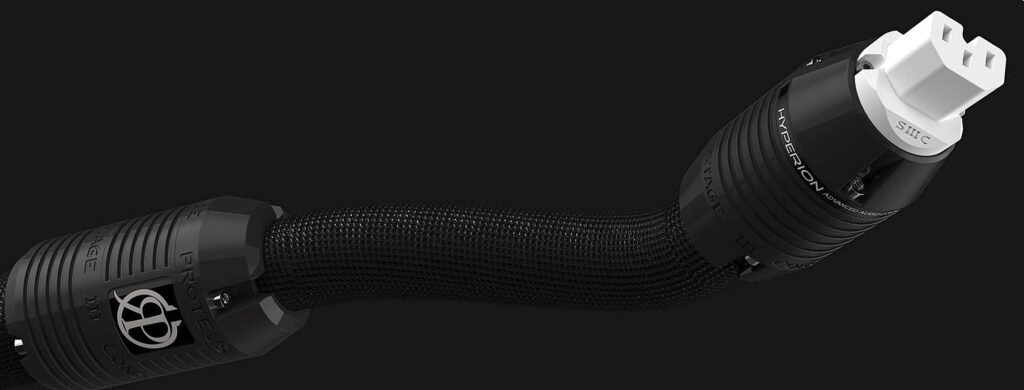
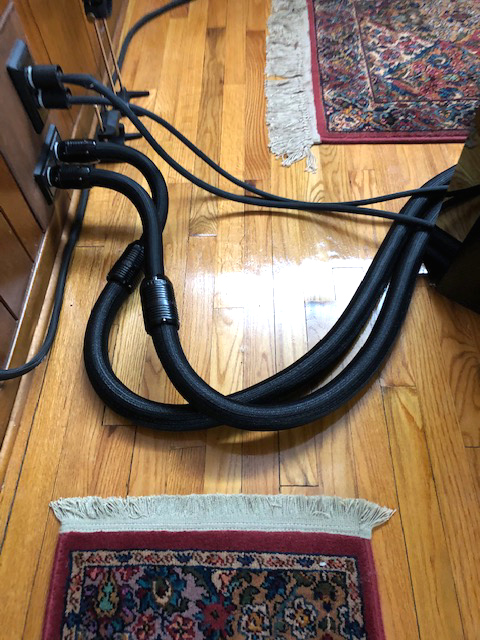
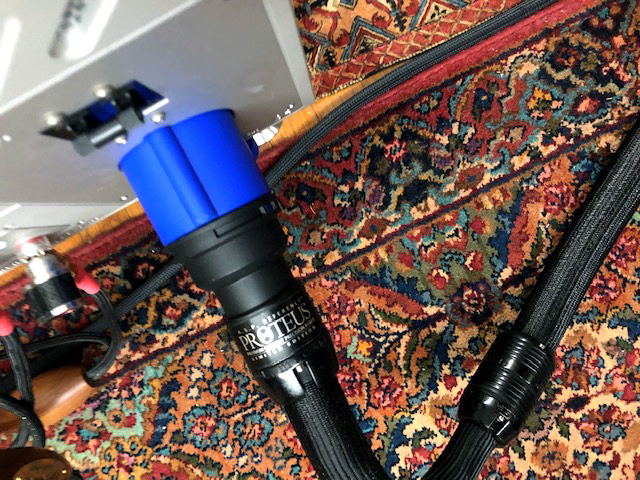

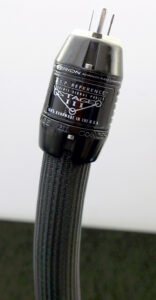
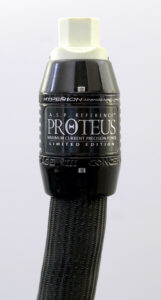
I think you should get your amp modified so a regular IEC connector can be used. If done right it should improve resale value.
Great review I like how your saw felt or heard how the cables filled in areas you thought you missed previously .
Ken, thanks for the suggestion, but given that the amp requires a 220 volt feed, it is unlikely that a normal IEC connector would work. It does however limit my ability to use the cords with other products.
Dean, many thanks for your comments. Living with a product over a much longer period than a review requires does sometimes result in further insights.
In Europe, all equipment runs on 230 VAC with IEC connectors, without any problems!
In this instance, the connector which the manufacturer has chosen at the amp end is non-standard. On the other hand, I chose to use a Schuko connector at the wall to prevent my maid from inadvertently plugging a vacuum cleaner into a 220 volt outlet. The EMM MTRX amps are capable of producing 1500 watts. I have no idea what the actual power draw is normally, probably 12-15 watts so you are correct that an IEC would probably have worked.